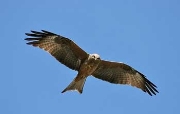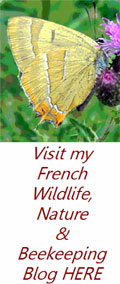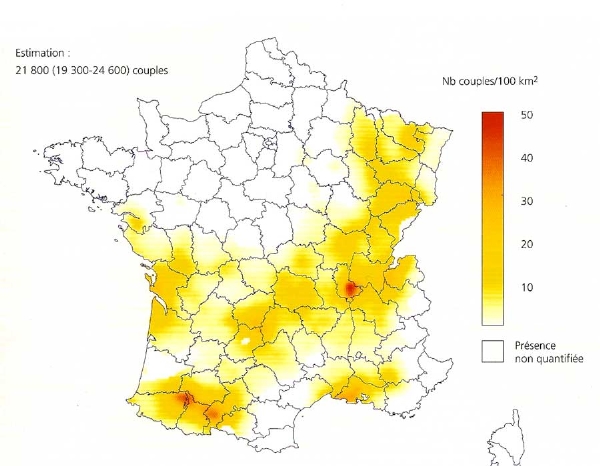





Black Kite Milvus migrans Milan Noir
Overview.
Rarely found in the
The name of this bird is perhaps a little
misleading, although they look black against the light they are actually
a fairly uniform brown. The head is brownish-white streaked with brown.
Breast and belly are a brownish red and the underneath of the wings are
a brownish black. The back is a fairly uniform brown with brownish black
flight feathers and tail feathers. The tail is forked when half open and
triangular or wedge shaped when fanned but importantly nothing like as
pronounced a forked tail as with the Red Kite. The beak is black and the
cere and legs are yellow. Juveniles are paler and there are no
distinguishing features to identify or separate males from females.

Behaviour,
Habitat and Diet.
In
They consume a
diverse range of food which will vary according to different regions and
seasons. Frequently opportunistic, this can comprise all types of
carrion, both fish and animal, as well as a range of live prey such as
insects, reptiles, birds and small mammals. Fields that have been close
cut for silage will often attract large numbers of them if there are
large numbers of voles present, as will rubbish tips and landfill sites,
even when these are in large cities. More than 75% of their diet is
likely to be creatures that have already died or are sick. They are an
extremely sociable and gregarious species, often forming large groups to
both feed and roost, although in France they tend to be separate when
nesting. Roosting is usually in large trees and their flight has a lazy
appearance with slow, non urgent wing beats and frequent circling and
soaring.
In the majority of cases the
site chosen to nest will take into account two requirements: first, the
presence of tall trees or rocky cliffs; secondly proximity to rivers,
lakes or ponds. The most usual location for the nest is on a main branch
or fork of tree, usually near the top. It may also be situated on the
edge of a cliff, or a shrub or small tree growing on a cliff. The nest
is a compact structure of twigs and small branches and these days it
frequently involves the use of paper, plastic and other waste, so look
carefully at that black plastic bag caught up in the tree, it may be
part of a nest. In fact human debris or rubbish near the base of a large
tree can be an indication of a nest. Nest are frequently renovated and
reused year after year.
The female
lays two to three eggs in April and incubates them herself for about 30
– 32 days; very occasionally the male may take a turn on the eggs. The
young are fed by both parents and fledge after about 42 days but
continue to stay with the parents for up to another two months.

Status, threats and menaces
As stated
earlier, they would seem to have gone through quite a rapid expansion in
Size: 55-60 cm
The decline of the Red Kite HERE